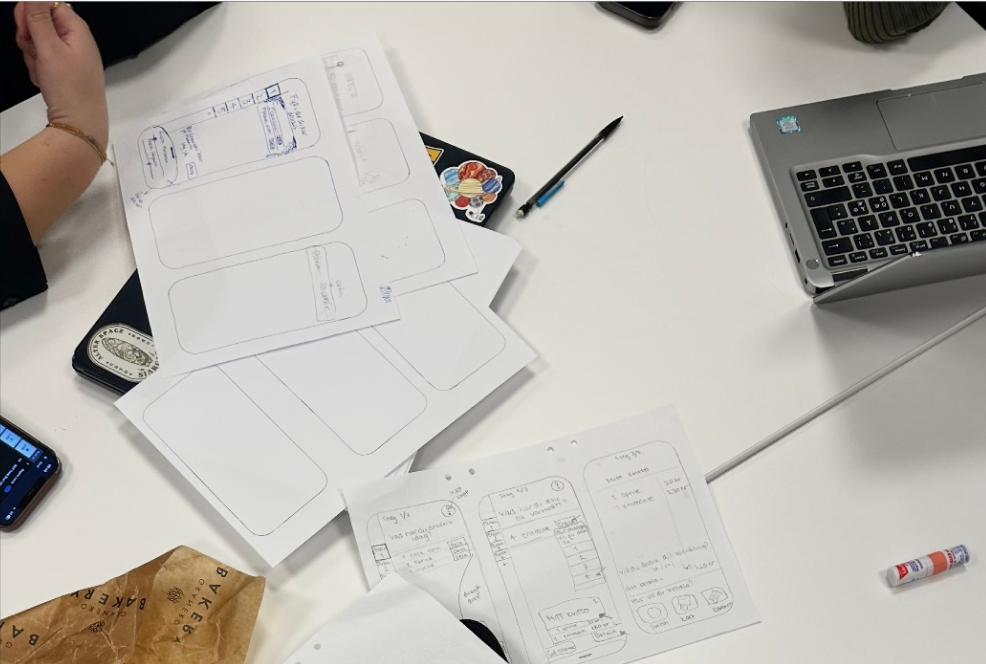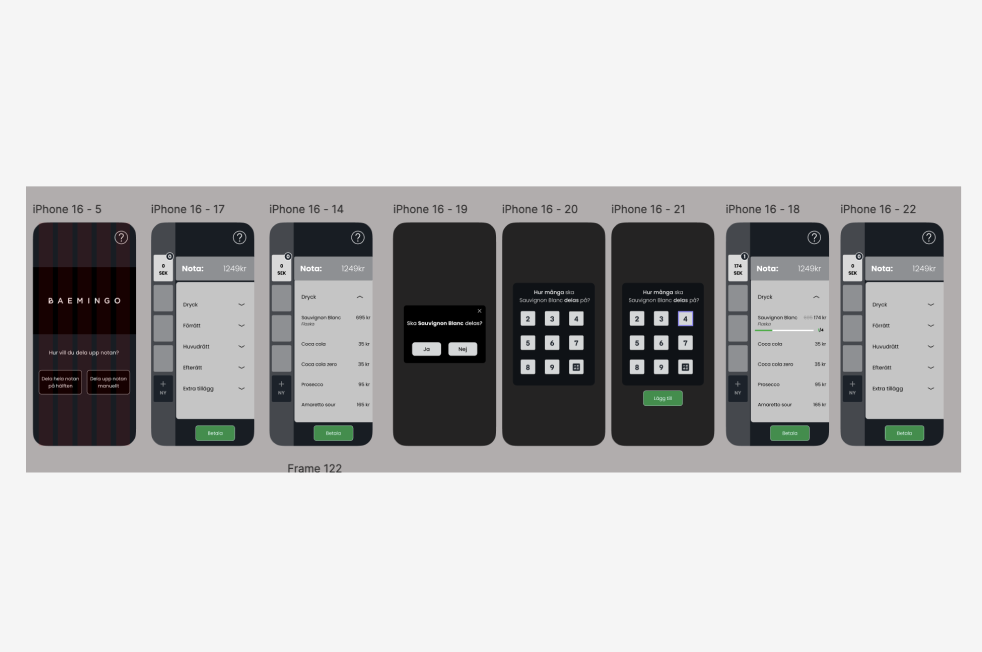BAEMINGO –
BAEMINGO –
Client
UX – Design
Duration
2 weeks
Field of study
Improving Efficiency and Reducing Stress in the Restaurant Checkout Process
BAEMINGO:
How do you streamline the checkout process in a high-paced restaurant environment, reducing staff stress and enhancing the guest experience?
Collaborating with BAEMINGO, we tackled the challenge of optimizing the bill-splitting system to alleviate staff pressure and simplify payment for guests, particularly during peak hours.
Creating a Better User Experience for Restaurant Staff
Problem:
BAEMINGO approached us with the goal of creating an improved user experience for restaurant staff. They believed that enhancing the staff’s experience would ultimately lead to a better experience for customers. The research highlighted issues in the checkout process, which led to staff stress and guest confusion. During peak hours, manual bill splitting was a significant pain point.
Research:
Insight Showed That the Biggest Pain Point Was Splitting the Bill
I conducted qualitative interviews, observations, and desktop research. Our focus extended beyond BAEMINGO’s system to include competitor platforms. Key insights:
Competitors offered a product description feature, which BAEMINGO users also desired. Currently, staff rely on external systems, wasting time.
A clean and intuitive user interface was a recurring need.
Orders were occasionally lost or duplicated, leading to food waste and decreased trust in the system.
Bill-splitting caused the greatest frustration.
A clear pain point emerged across all interviews: bill-splitting caused the greatest frustration. Staff described it as a recurring issue, especially during busy periods, prompting us to focus our solution on this area.
Design Process:
A System to Ease Bill-Splitting and Reduce Staff Workload
Our HMW: “How might we optimize and simplify the handling of bill-splitting for restaurant staff?”
Ideation: Brainstormed and sketched ideas to streamline payment and reduce staff involvement.
Concept: Developed a QR code-based solution that allows guests to split and pay their bill independently.
Features:
Guests scan a QR code at their table, opening a web app to manage their bill.
They select their items and pay without needing assistance from staff.
Real-time visual updates for staff during the payment
Iterative Design:
User Testing Focused on Guests to Ensure a Seamless Experience
Starting with low-fi prototypes, we progressed to high-fidelity versions for usability testing. The prototypes highlighted the QR code feature and staff-facing visual updates.
We primarily tested these prototypes with guests, as the solution aimed to reduce staff involvement. Guests were given tasks to complete using the system, allowing us to gather detailed feedback on usability and clarity. Their input helped fine-tune the interface and ensure that the self-service bill-splitting process was intuitive and efficient. While staff feedback was collected, our main priority was ensuring the guest experience was seamless, as this would ultimately reduce staff workload.
Results:
Validation from BAEMINGO and Positive Feedback from Users
BAEMINGO's feedback highlighted our outstanding research efforts and our initiative to test both their system and competitors. They appreciated the insights we provided and valued our idea to support stressed staff members. BAEMINGO also praised the clean, intuitive design. Additionally, our work revealed the need for an improved customer onboarding process. Many restaurant partners were unaware of key system features.
Future customers who tested the app shared their experiences:
"It was very easy at the beginning, and it was clear what I had to pay on the bill."
"I like it, this to avoid the awkward Swish situation."
"I really, really like this. If this was a thing, I would use it."
Reflection and Lessons Learned:
The Power of Research, Iteration, and User Feedback
One of the key takeaways from this project was realizing how powerful research is—from interviews to observations. These methods provided invaluable insights and guided our design decisions.
I also learned the importance of iteration. What seems crystal clear to designers is often not as obvious to users. Testing and gathering feedback helped bridge this gap.
Additionally, competitor analysis offered new perspectives and highlighted opportunities for improvement.
This experience reinforced the value of user-centered design, collaboration, and the need to continuously refine solutions based on real-world feedback.
Casandra Sohlström
Lara Uzel
Olivia Shevchuk
Julia Granath
Team
Other Projects

























